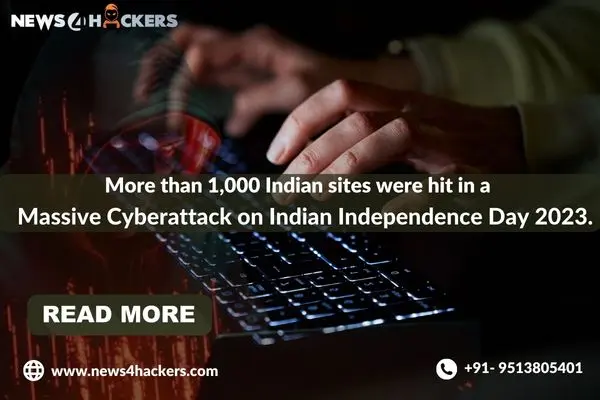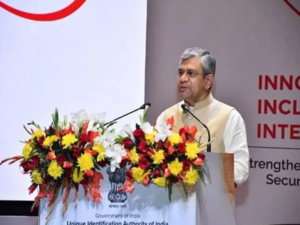More than 1,000 Indian sites were hit in a massive cyberattack on Indian Independence Day 2023.

The report highlighted that while educational and small enterprises were targeted in enormous-scale defacement attacks and access panel takeovers, the government and BFSI sectors took the brunt of DDoS attacks.
New Delhi: massive Cybersecurity investigators discovered on Friday that over 1,000 Indian websites were hit by hackers as part of their Independence Day cyber attack operation under the hashtag #OpIndia. According to the CloudSEK team, the malicious campaign was directed by hacktivist organizations from several nations and used strategies like DDoS assaults, defacement attacks, and user account takeovers.
Political and spiritual motives drove the Independence Day hacktivist effort, which targeted digital infrastructure in the government, education, BFSI (banking, financial services, and insurance), small business, and other sectors.
The report highlighted that while educational and small enterprises were targeted in enormous-scale defacement attacks and access panel takeovers, the government and BFSI sectors took the brunt of DDoS attacks.
“Despite their present limits, these organizations may soon pose a serious threat to nations.” According to Abhinav Pandey, a cyber security researcher at CloudSEK, “The increase in cooperation and readily available accessibility to malicious attacking tools and information, in combination with the possibility of backing from state-sponsored hackers, could increase their impact.”
The cyber-security company claimed to have notified all the businesses and organizations that had been hacked.
The accusations of DDoS assaults and user account takeovers have been exaggerated for publicity and fame, according to CloudSEK’s study, while hacktivist groups from Pakistan, Bangladesh, and other countries targeted Indian websites.
Researchers at CloudSEK have not completely validated these assertions, which are frequently stated in their communication channels. However, the strategies and resources employed by the hacktivist organizations strongly coincide with the conclusions detailed in CloudSEK’s Hacktivism Whitepaper, according to the business.
Similar tactics were used by Indian forces in response to attacks on Indian infrastructure, and they specifically targeted the websites of the Bangladeshi air force, army, military, and national revenue board, as well as a number of Pakistani departments and government organizations.
The hacktivist attacks were significantly up during the first quarter of 2023, according to the cyber-security agency, with India appearing as the main target, closely followed by Israel, Poland, Australia, and Pakistan.
About The Author:
Yogesh Naager is a content marketer that specializes in the cybersecurity and B2B space. Besides writing for the News4Hackers blog, he’s also written for brands including CollegeDunia, Utsav Fashion, and NASSCOM. Naager entered the field of content in an unusual way. He began his career as an insurance sales executive, where he developed an interest in simplifying difficult concepts. He also combines this interest with a love of narrative, which makes him a good writer in the cybersecurity field. In the bottom line, he frequently writes for Craw Security.
Read More Article Here:
Karnataka Congress Website got hacked by 4 Hackers: Hosting Spoof Site
Citrix ShareFile flaw added by CISA to KEV Catalog as a result of In-the-Wild Attacks.









